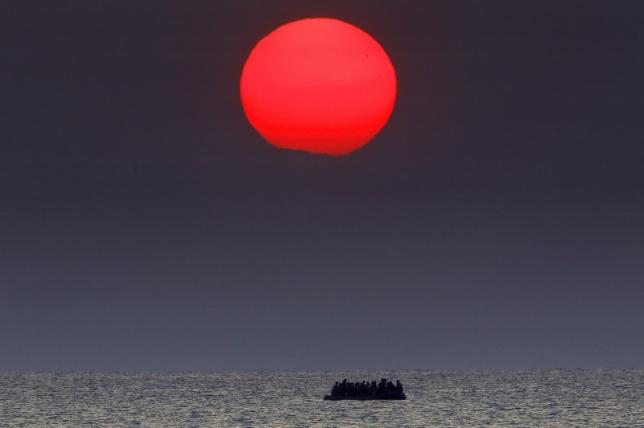ADDIS ABABA (HAN) July 7.2016. Public Diplomacy & Regional Security News. By Tesfa Mogessie. Ethiopia which hosts 750,000 refugees from Eritrea, South Sudan and Somalia contributes significant share of migrants to Europe.
The European Union (EU), through its EU Trust Fund, has made a commitment of 100 million Euros to curb the flow of migrants fleeing Ethiopia by mitigating pushing factors through the creation of jobs for would-be migrants.
In view of the massive inflow of migrants from Africa and the Middle East due to poor economic realities and volatile political situations, the EU is implementing measures to dry out pushing factors. Member countries of the Union are stepping up efforts to bolster border checkpoints to minimise the influx of migrants crossing deep into European territories.
The European Parliament, its Council and Commission agreed on June 22, 2016, to the Commission’s proposal for a European Border & Coast Guard to reinforce cooperation in border control.
“The agreement on the creation of a coast guard shows that Europe is able to act swiftly and resolutely to deal with common challenges,” a Commission press release quoted its President, Jean-Claude Juncker as saying. “As of now, Europe treats the protection of its borders as a common mission of solidarity,” Juncker added.
Migration remains a hot topic of debate and discussion and some EU Member States have sealed off their borders by reinforcing their coast guards, while others including Germany opened their doors wide. However, the common stance they have agreed on is, the need to nip out-migration at the source, be it from Africa or the Middle East. The EU has channeled funds for source countries, with the belief that more jobs should be created to absorb those who might be tempted to migrate and encourage them to remain at home.
Ethiopia, one of the beneficiaries of the fund, currently hosts some 750,000 refugees from South Sudan, Eritrea and Somalia. The country has also contributed significant numbers of migrants from East Africa to Europe via the Mediterranean Sea – a treacherous journey which has tragically claimed the lives of thousands drowned when substandard boats have capsized.
The intended outcome of this use of the Trust Fund to address a complex issue and the need for cooperation, has been clearly expressed.
“Improving the livelihood of farmers in drought-affected areas, including central and northern Ethiopia, and create more jobs,” said Ambassador Chantal Hebberecht, head of EU to Ethiopia.
Individual European countries have also pledged aid to Ethiopia. The European agreement was signed just a month after Italy endorsed 2.3 million dollars to Ethiopia for a similar programme.
Italy is one of Europe’s top receivers of asylum applications by Ethiopians with 95pc of the 6,350 that irregularly migrated to Europe in 2015. Official reports of Italian authorities also indicated that of the 3,500 immigrants registered last year up to 60pc were found to be Ethiopians while trying to enter the country claiming they are Eritreans or Somalis.
The initiative funded by the Italian Development Cooperation came about after a collaborative screening to identify beneficiary weredas by UN agencies and the Government of Ethiopia. As such, the initiative targets around 80,000 direct and over half a million indirect beneficiaries across selected weredas in Amhara, Oromia and Tigray states. A recent study focusing on the status of returnees of irregular migration to Ethiopia showed that 22pc of the total 160,000 people are from Tigray State.
On June 14, President Juncker and Ethiopian Prime Minister, Hailemariam Desalegn, signed a strategic engagement agreement on a range of issues, including regional peace and security, counter-terrorism, social and economic development, climate change and migration.
Between 2014 and 2020, the EU under the National Indicative Programme (NIP), plans to provide an initial 745 million Euros to support government-led projects. EU funding makes up around 34pc of the total aid assistance Ethiopia received in the past two years.
In 2015, with nearly 300 companies from EU operating in Ethiopia, the trade volume stood at three billion Euros. The EU market absorbed approximately 33.6pc of the Ethiopian total exports, whereas 19.5pc of imports to Ethiopia came from Europe. The EU-Ethiopian relationship dates back to 1975 at which time an EU Delegation office in Addis during the Dergue’s regime.

Leave a Reply